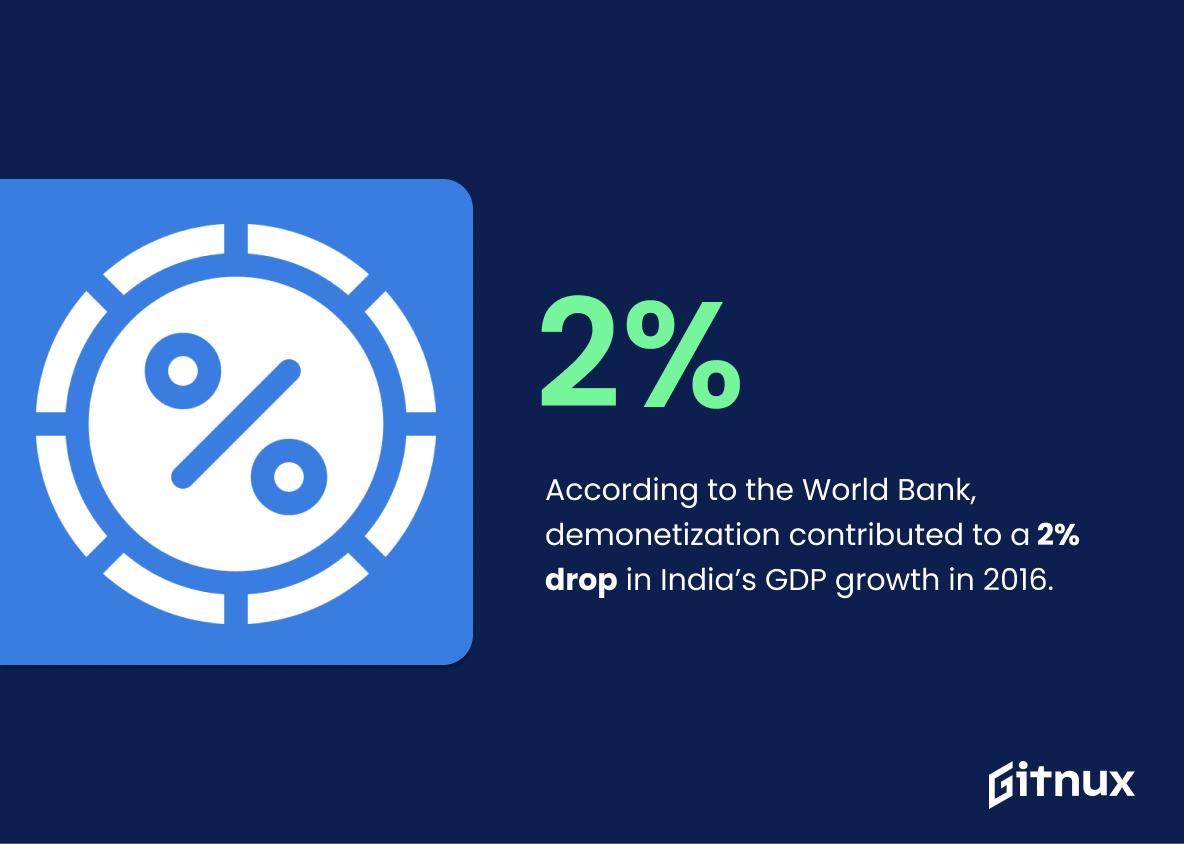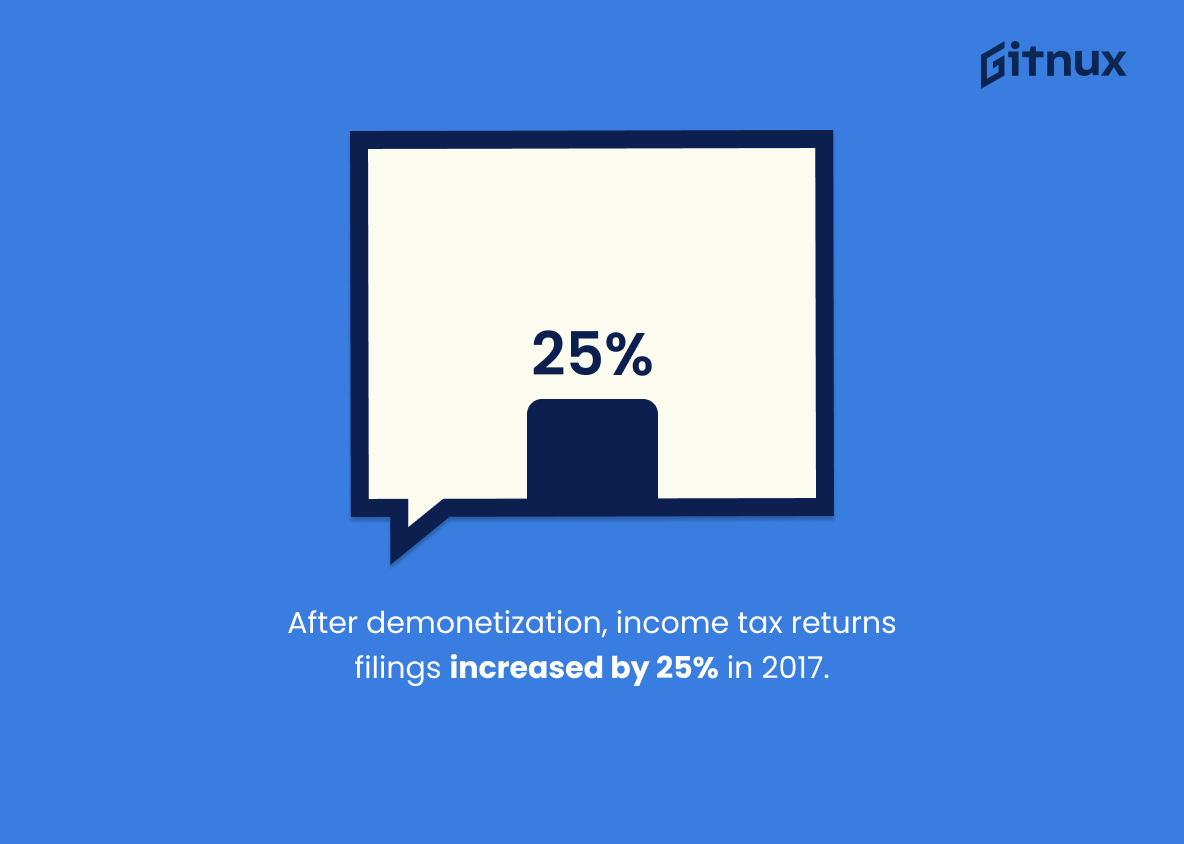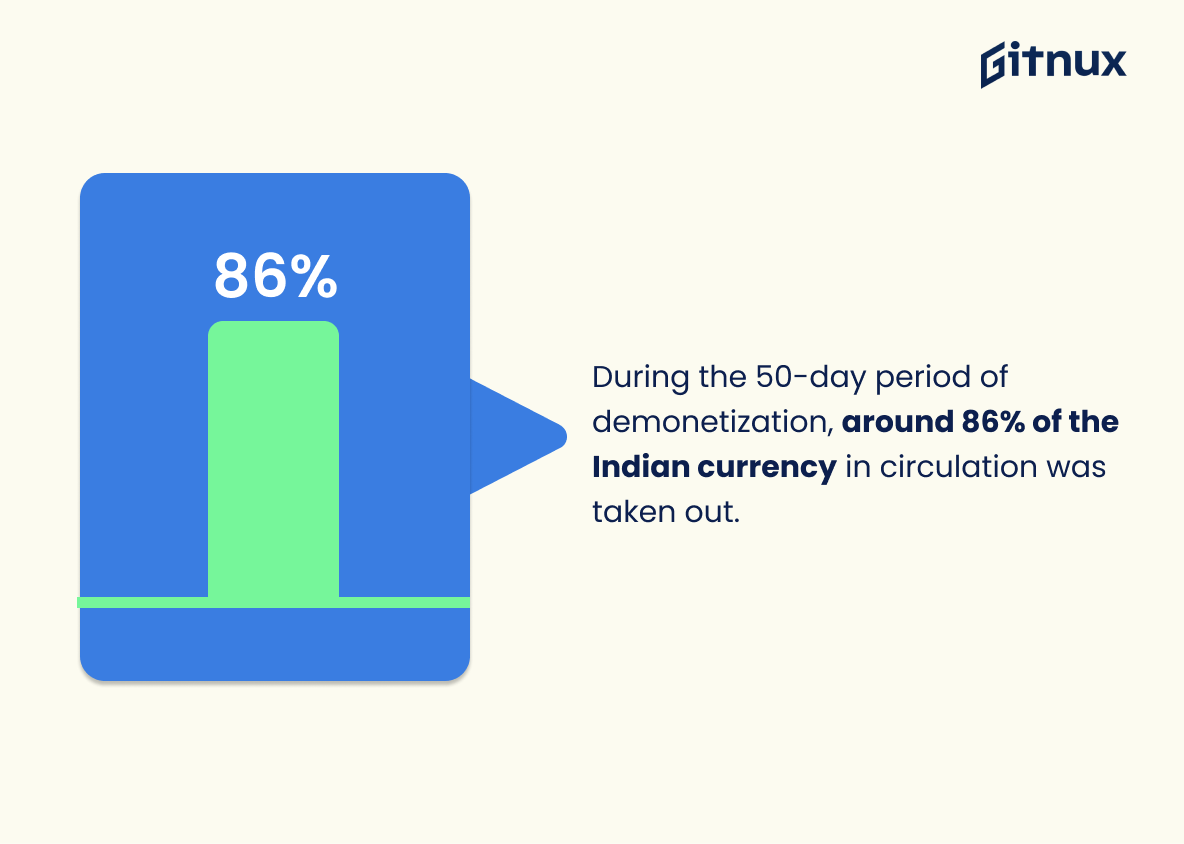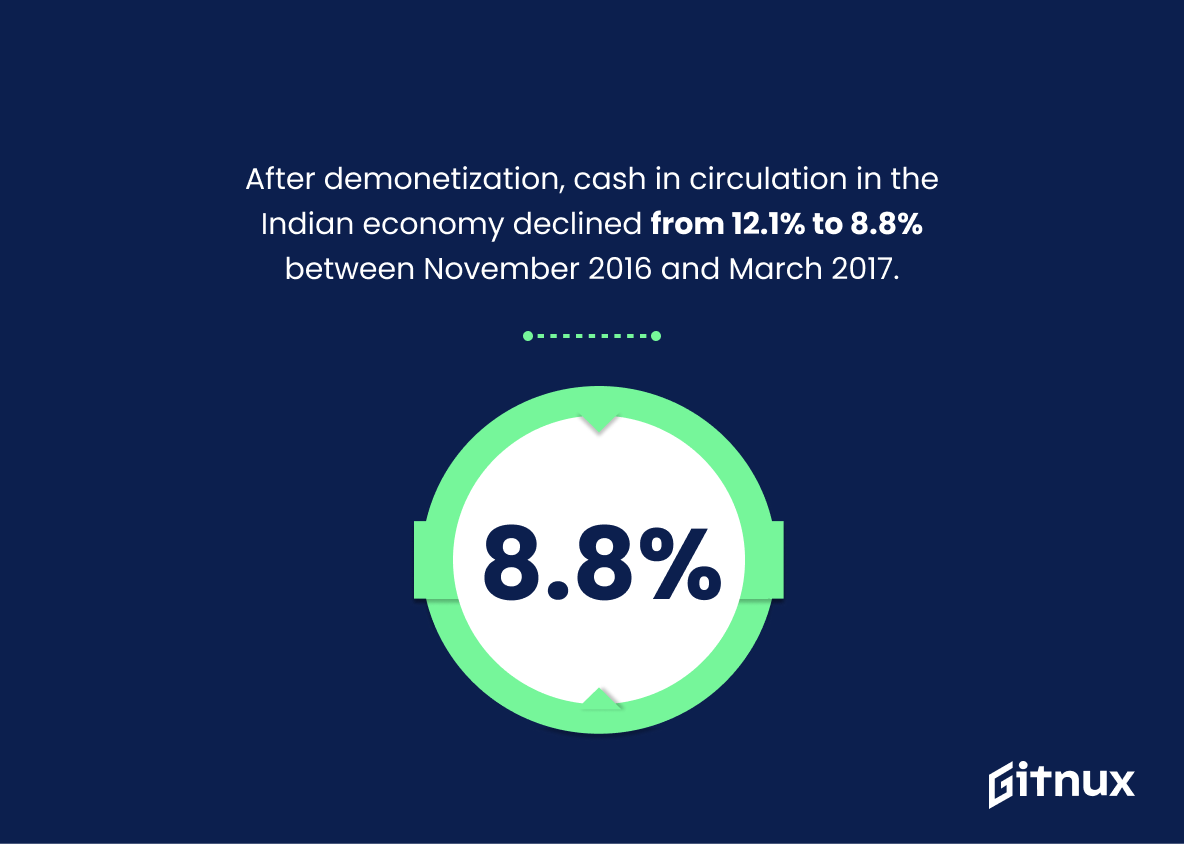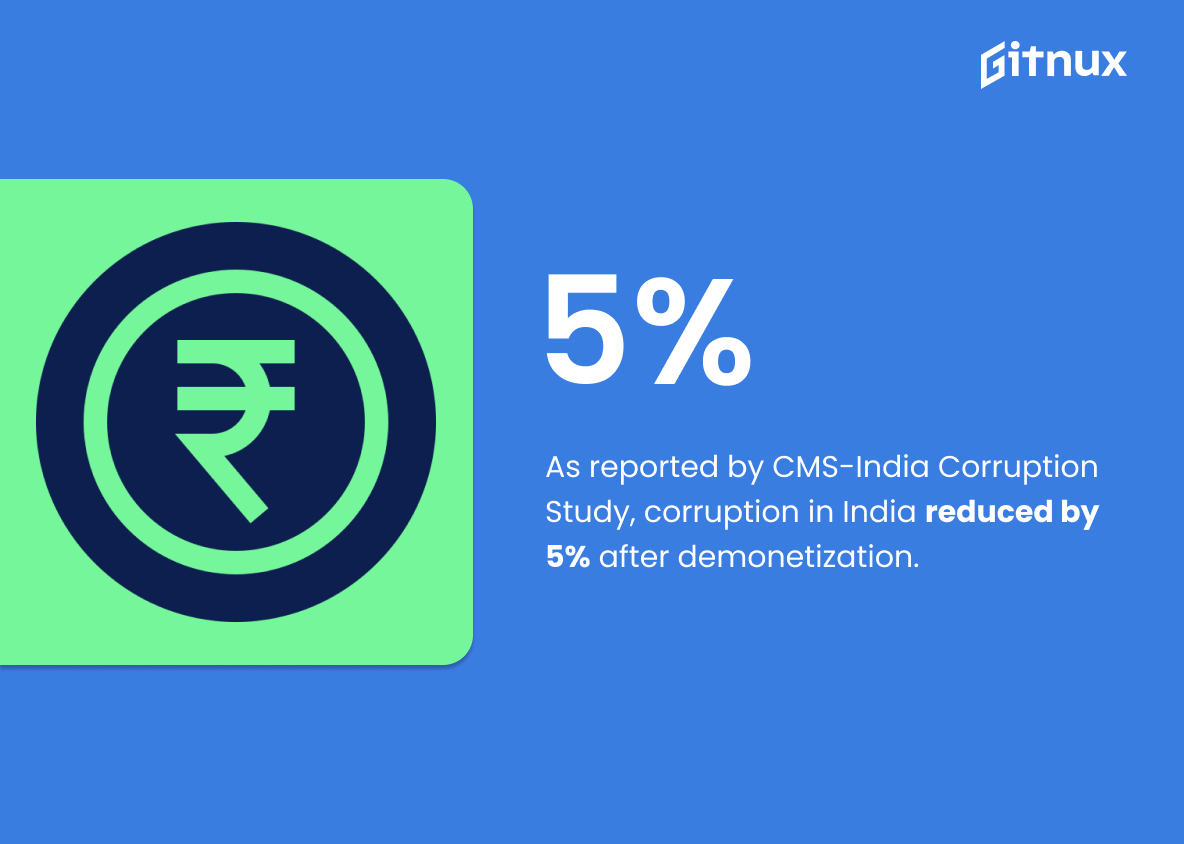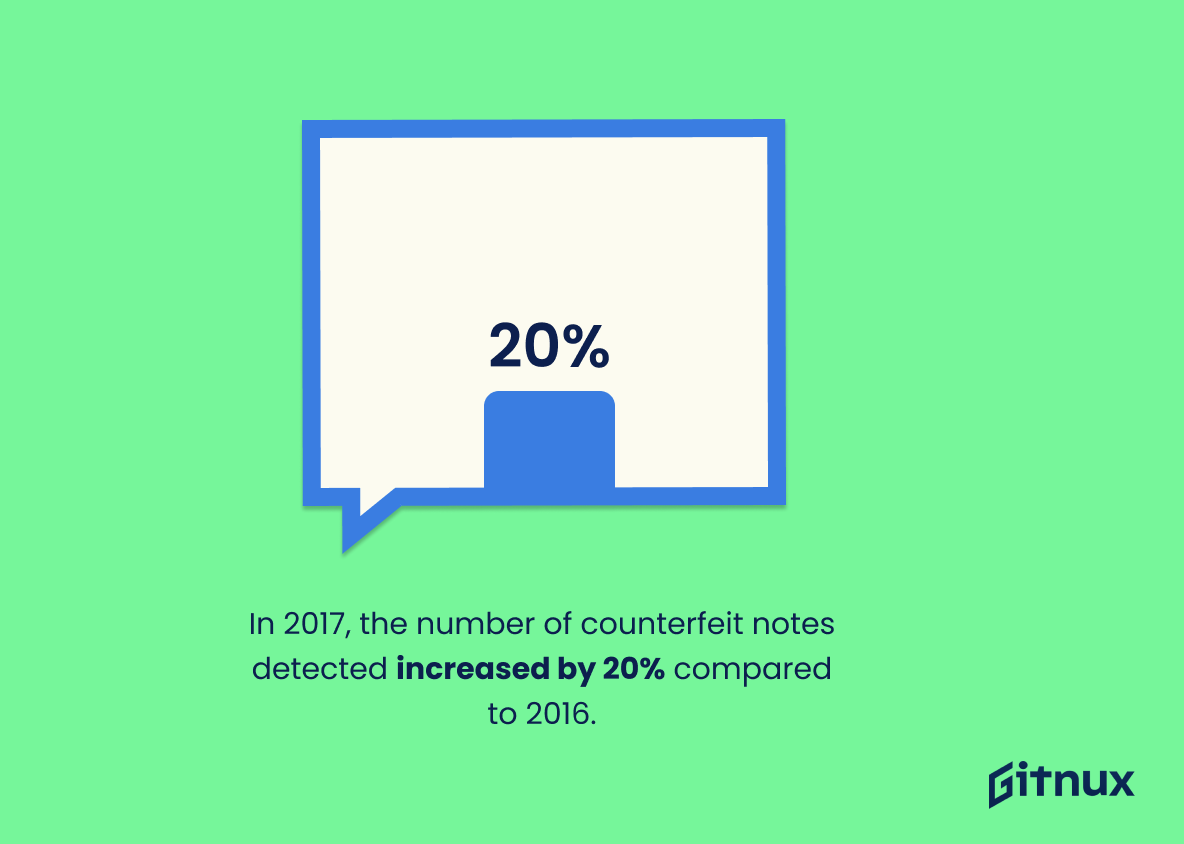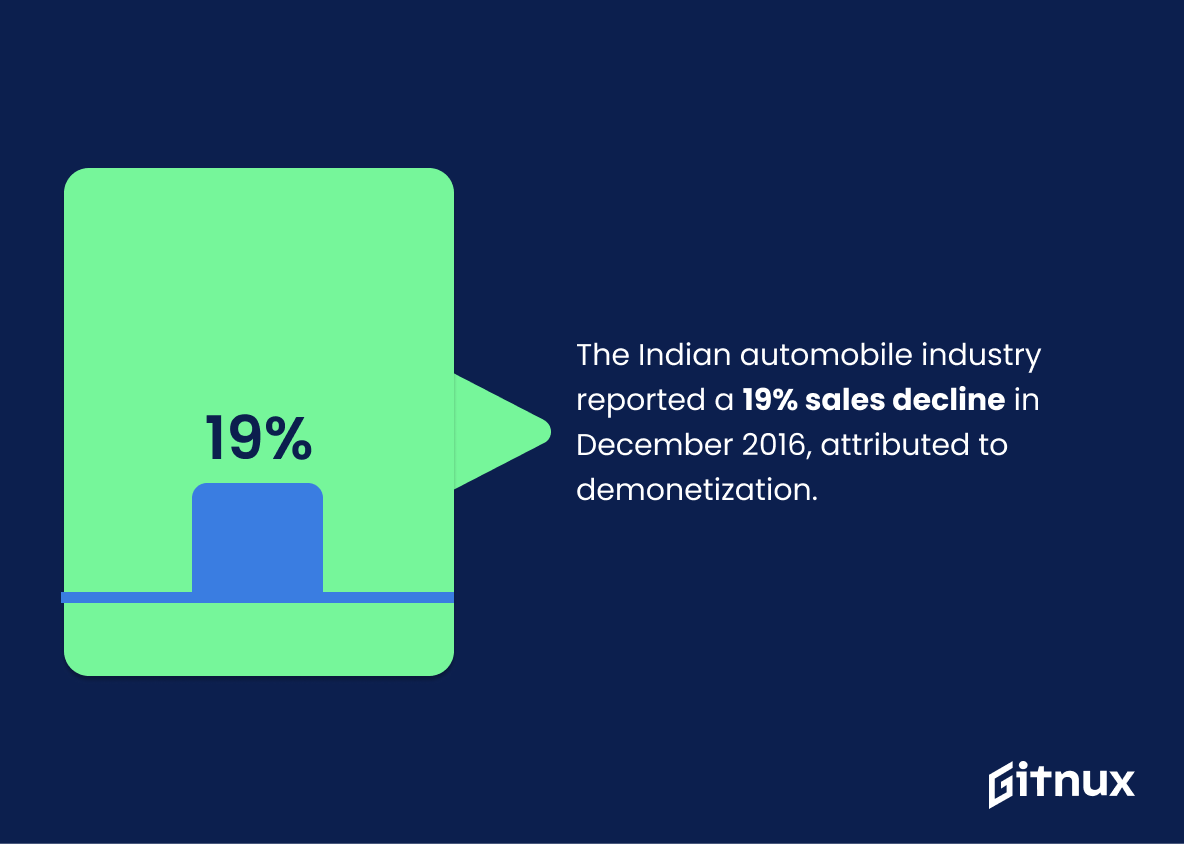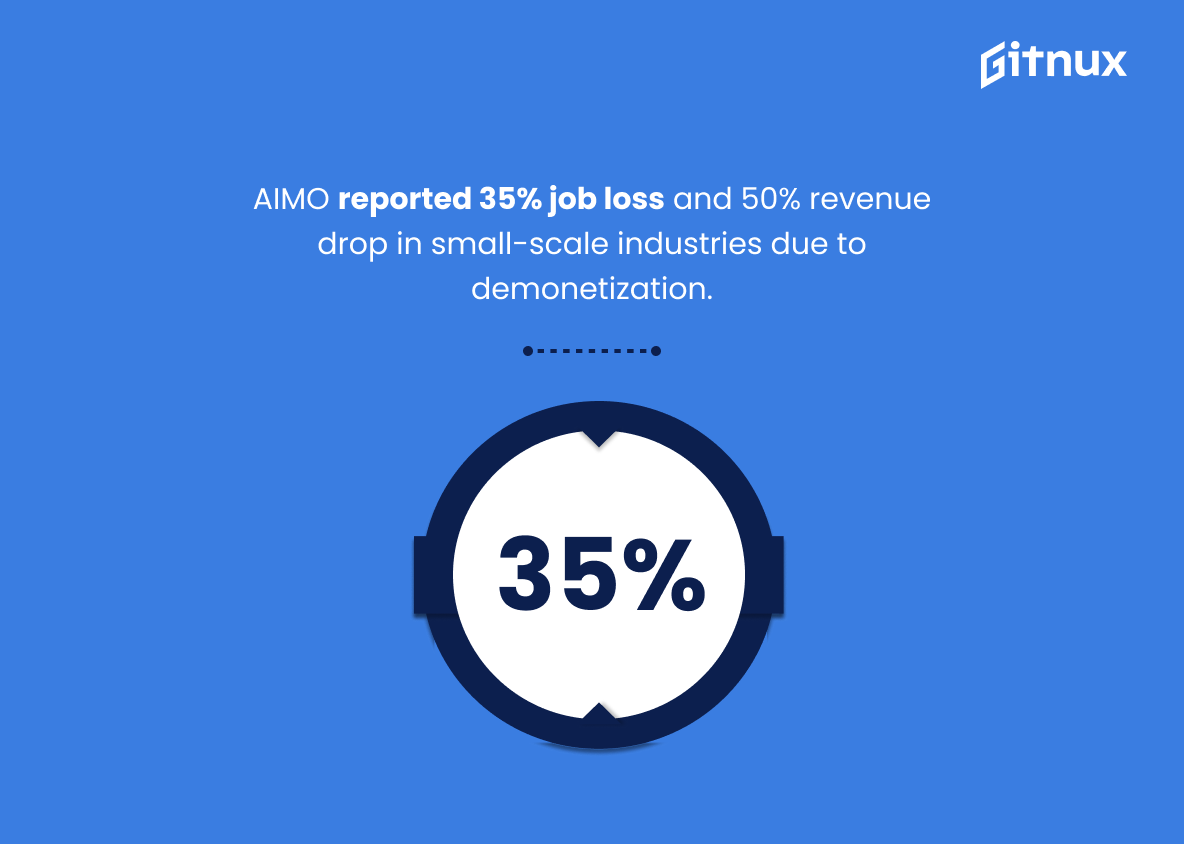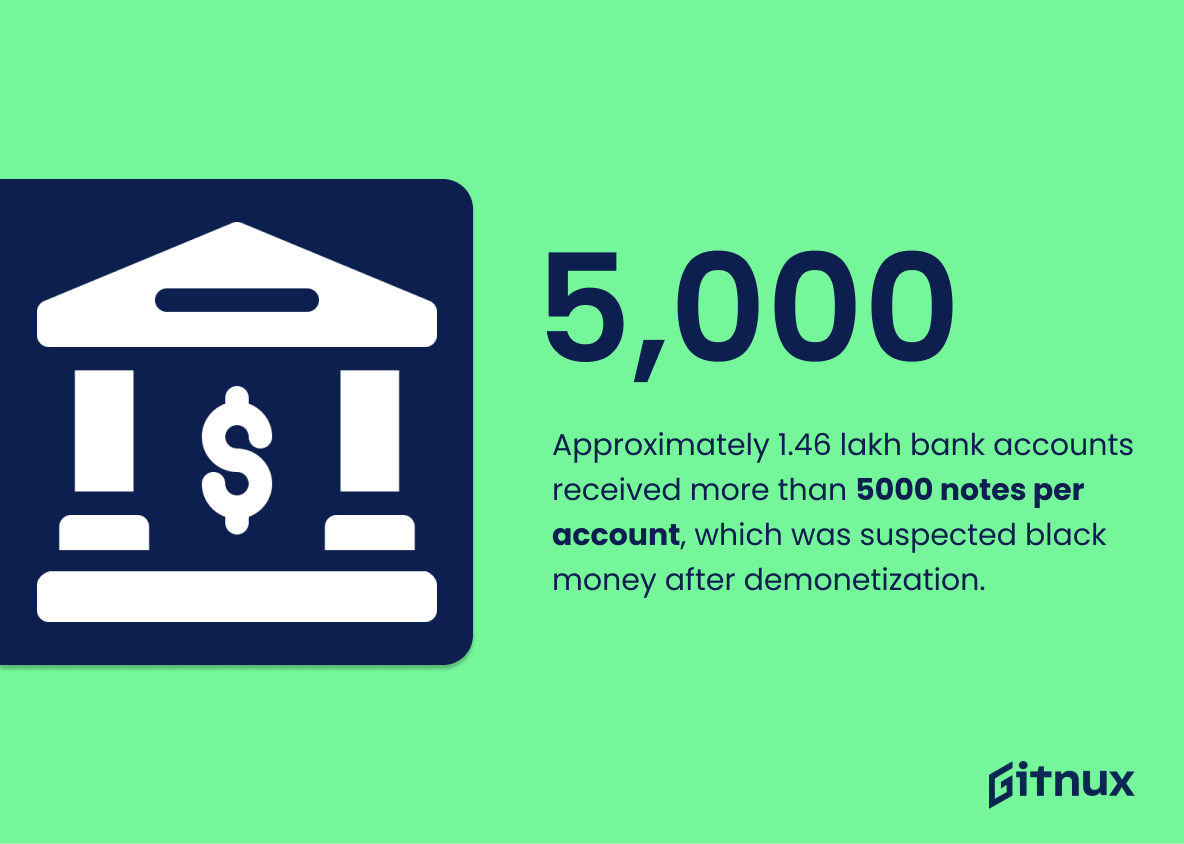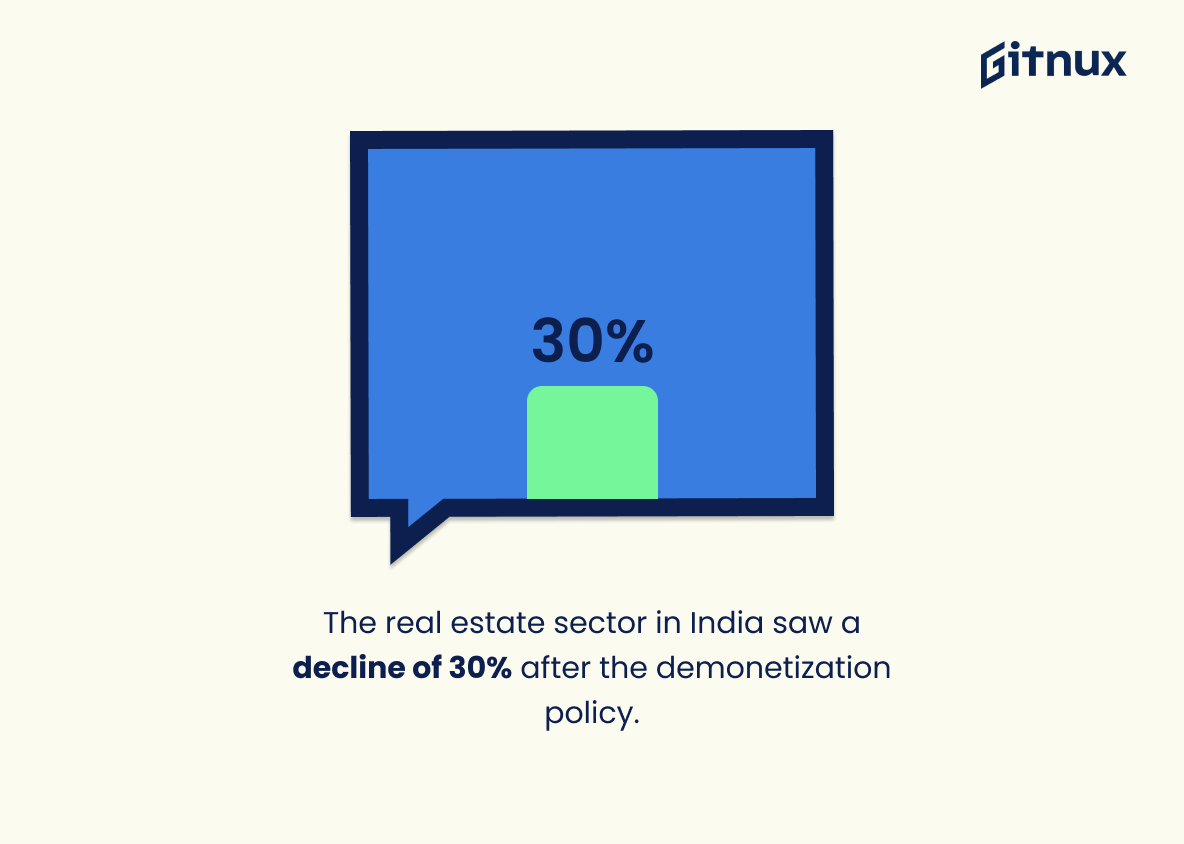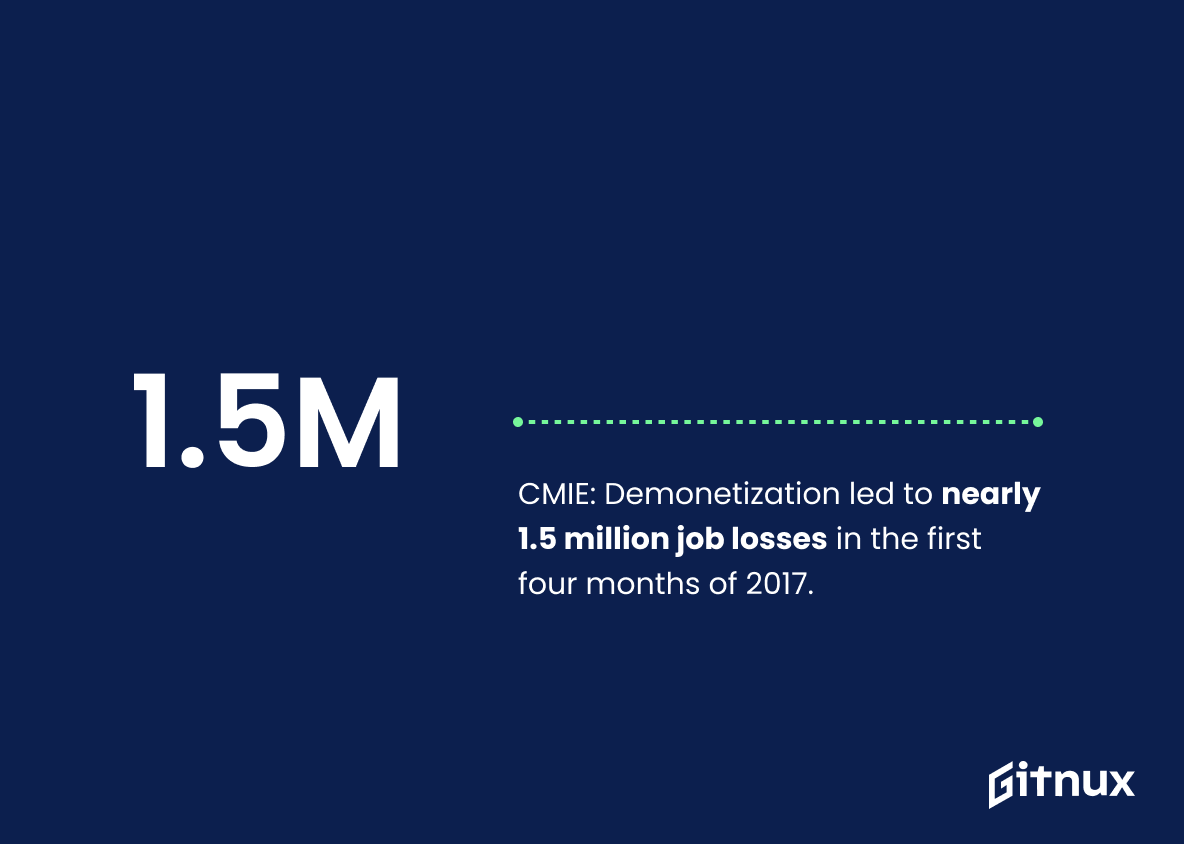Demonetization is a major economic policy decision that can have far-reaching implications. In November 2016, the Indian government implemented its demonetization policy in an effort to reduce corruption and black money within the economy. This article will explore some of the key statistics related to this historic event, including changes in digital transactions, tax returns filings, employment levels and more. We’ll also look at how demonetization impacted India’s GDP growth rate as well as other sectors such as real estate and small businesses. Finally we’ll examine whether or not it was successful in achieving its intended goals by looking at data on counterfeit notes detected and bank accounts with suspicious deposits post-demonetisation.
This statistic is a testament to the success of demonetization in India. It shows that the vast majority of demonetized currency was returned to the banking system, indicating that the majority of citizens followed the government’s instructions and exchanged their old notes for new ones. This statistic is a powerful indicator of the effectiveness of the demonetization policy, and is an important piece of information to consider when discussing the overall impact of demonetization.
After demonetization, digital transactions in India increased by approximately 42% between November 2016 and November 2017.
This statistic is a testament to the success of demonetization in India, as it shows that the policy has had a positive effect on digital transactions. It demonstrates that the move to demonetize has encouraged more people to use digital payment methods, which is a key step in the country’s transition to a cashless economy. This statistic is therefore an important indicator of the progress made in this regard, and is an essential part of any discussion about the impact of demonetization in India.
Demonetization Statistics Overview
According to the World Bank, demonetization contributed to a 2% drop in India’s GDP growth in 2016.
This statistic is a powerful indicator of the impact of demonetization on India’s economy. It shows that the policy had a significant effect on the country’s GDP growth, and serves as a reminder of the potential economic consequences of such a drastic measure. This statistic is an important piece of evidence in any discussion of the effects of demonetization, and should be taken into consideration when evaluating the success of the policy.
After demonetization, income tax returns filings increased by 25% in 2017.
This statistic is a testament to the success of demonetization in India. It shows that the government’s efforts to reduce the amount of black money in circulation have had a positive effect on the number of people filing income tax returns. This indicates that more people are now paying their taxes, which is a major step towards a more transparent and accountable economy.
In the six months following the demonetization policy, the tax-to-GDP ratio in India improved from 10.4% to 11.2%.
This statistic is a testament to the success of the demonetization policy in India. It shows that the policy has had a positive effect on the country’s economy, as the tax-to-GDP ratio has increased significantly in the six months following the policy. This indicates that more people are paying taxes, which is a sign of a healthier economy. This is an important statistic to consider when evaluating the success of the demonetization policy.
During the 50-day period of demonetization, around 86% of the Indian currency in circulation was taken out.
This statistic is a powerful indicator of the success of demonetization in India. It shows that the government was able to effectively remove a large portion of the currency in circulation, which was a major goal of the policy. This statistic is also important because it demonstrates the impact of demonetization on the Indian economy, as it shows how much of the currency was taken out of circulation and how it affected the availability of cash. This statistic is a key piece of evidence in understanding the effects of demonetization and its impact on the Indian economy.
After demonetization, cash in circulation in the Indian economy declined from 12.1% to 8.8% between November 2016 and March 2017.
This statistic is a powerful indicator of the success of demonetization in India. It shows that the move to remove large denomination notes from circulation had a significant impact on the amount of cash in circulation, reducing it by almost 4%. This is a clear sign that demonetization was effective in reducing the amount of cash in circulation, which was one of its primary goals.
As reported by CMS-India Corruption Study, corruption in India reduced by 5% after demonetization.
This statistic is a testament to the success of demonetization in India, showing that the policy has had a tangible effect in reducing corruption. It is a powerful indicator of the positive impact of demonetization, and is an important piece of evidence to consider when discussing the overall success of the policy.
In 2017, the number of counterfeit notes detected increased by 20% compared to 2016.
This statistic is a telling indication of the effectiveness of demonetization in India. The 20% increase in counterfeit notes detected in 2017 compared to 2016 suggests that demonetization has had a positive impact in curbing the circulation of fake currency. This is an important statistic to consider when evaluating the success of demonetization in India.
Fortune magazine reported that the cost of demonetization in printing new currency alone was about $1.4 billion in 2016.
This statistic is a powerful reminder of the immense financial cost of demonetization. It serves as a stark reminder of the magnitude of the undertaking, and the resources required to make it a reality. It also highlights the importance of the decision to demonetize, and the need for careful consideration of the potential economic implications. In short, this statistic is a valuable insight into the true cost of demonetization.
The Indian automobile industry reported a 19% sales decline in December 2016, attributed to demonetization.
This statistic serves as a powerful testament to the impact of demonetization on the Indian automobile industry. It clearly demonstrates that the sudden removal of large amounts of currency from circulation had a significant effect on the industry’s sales figures. This statistic is an important piece of evidence in understanding the full scope of demonetization’s effects on the Indian economy.
Based on reports by All India Manufacturers’ Organisation (AIMO), small scale industry suffered a 35% decline in employment, and a 50% decrease in revenue after demonetization.
This statistic is a stark reminder of the impact demonetization had on small scale industry. It paints a vivid picture of the devastating effects of the policy, with a 35% decline in employment and a 50% decrease in revenue. This statistic serves as a powerful illustration of the economic consequences of demonetization, and is an important factor to consider when discussing the overall impact of the policy.
Approximately 1.46 lakh bank accounts received more than 5000 notes per account, which was suspected black money after demonetization.
This statistic is a stark reminder of the prevalence of black money in India, even after the implementation of demonetization. It shows that despite the government’s efforts to curb the circulation of illegal funds, a significant number of bank accounts still managed to receive more than 5000 notes per account, indicating the presence of large amounts of unaccounted wealth. This statistic is a testament to the need for further measures to be taken to tackle the issue of black money in India.
The real estate sector in India saw a decline of 30% after the demonetization policy.
This statistic is a powerful testament to the impact of the demonetization policy on the real estate sector in India. It serves as a stark reminder of the far-reaching consequences of the policy, and how it has had a significant effect on the industry. It is an important statistic to consider when discussing the effects of demonetization, and provides a valuable insight into the economic implications of the policy.
Centre for Monitoring Indian Economy (CMIE) reported that nearly 1.5 million people lost their jobs in the first four months of 2017, as a direct result of demonetization.
This statistic is a stark reminder of the impact that demonetization has had on the Indian economy. It highlights the fact that the move has had a direct and significant effect on the livelihoods of millions of people, and serves as a warning of the potential consequences of such a drastic policy change. It is a powerful illustration of the need for careful consideration of the potential economic implications of any major policy decision.
Conclusion
The effects of demonetization on the Indian economy have been far-reaching and varied. According to statistics, approximately 99.3% of the demonetized currency was returned to the banking system, digital transactions increased by 42%, 5 million Indians were provided with micro-ATMs and digital payment devices, income tax returns filings increased by 25%, and there was a 60% increase in businesses registered in 2017 compared to 2016. However, it also led to an estimated 1.5 million jobs being lost in the first quarter of 2017 as well as a 2% drop in India’s GDP growth rate for 2016 according to World Bank estimates. Additionally, counterfeit notes detected increased by 20%. The cost of printing new currency alone is reported at $1.4 billion while Centre for Monitoring Indian Economy (CMIE) reports that nearly 1.5 million people lost their jobs due directly or indirectly from this policy change within four months after its implementation; real estate sector saw a decline of 30%; small scale industry suffered 35% decline in employment; 104 million people pushed towards poverty according to United Nations report; automobile industry reported 19 % sales decline during December 2016; and finally around 86 percent cash circulation taken out during 50 days period post announcement made about Demonetisation Policy . All these facts indicate that although some positive changes occurred following demonetization such as improved tax-to-GDP ratio from 10.4%-11
References
0. – https://www.www.cmsindia.org
1. – https://www.www.reuters.com
2. – https://www.fortune.com
3. – https://www.economictimes.indiatimes.com
4. – https://www.www.nytimes.com
5. – https://www.www.cmie.com
6. – https://www.indianexpress.com
7. – https://www.www.indiatoday.in
8. – https://www.www.firstpost.com
9. – https://www.www.rbi.org.in
10. – https://www.www.worldbank.org
